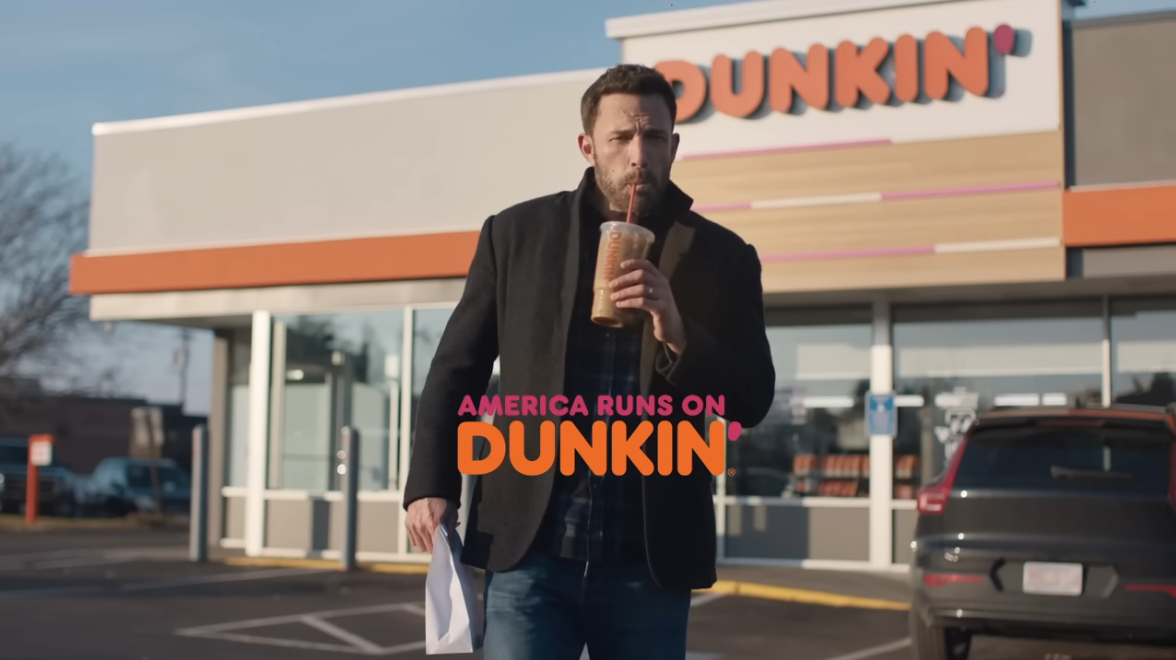Boost visibility and capture your audience with these effective ad techniques.
Reaching the right audience with the right message at the right time is hard enough for today’s businesses even without the constant stream of information consumers face daily.
As Gartner has identified, this challenge is compounded by an overall reduction in marketing resources, disruptions to customer data practices, and increased ad avoidance by the general public.[1]
To boost visibility, truly capture your audience’s attention, and remain competitive in the face of evolving challenges, you should be optimizing your use of advertising techniques with this type of meaningful connection in mind.
Below, we’ll share what some of the most common (and clever) advertising techniques are as well as tips to utilize them for your own business.
Do you need help with your advertising?
Start by visiting our list of the top advertising agencies to consider where you can sort options by rating, expertise, and service provider size.
Check out our list of companies in the following areas:
What constitutes an advertising technique?
One thing to clarify before we dive into the techniques themselves is what we even mean by “techniques.” While there are different types of advertising e.g. print, radio, TV, social, email, etc. what we’re referring to here are the persuasive and visual methods used to make those tactics more effective.
With that in mind, advertising techniques represent the methods marketers use to attract attention for a product or service. These can be persuasive or visual in nature and usually have different goals in mind, whether that’s emphasizing the mystique of a product, promoting emotional appeal, or drawing the eye of a consumer using the principles of visual design.
The logical triangle: why persuasive advertising works

First recognized and coined by the ancient Greek philosopher Aristotle, the logical triangle forms the basis for why these advertising techniques work so well. These three modes of persuasion appeal to different facets of the human psyche, which means they are ripe for the picking when it comes to persuasive advertising:
Ethos appeals to peoples’ ethics. This can take the form of promoting sustainability and consumer responsibility or designing programs around helping underserved communities.
Logos appeals to peoples’ logical sensibilities. It involves using facts, figures, and statistics to convince people of the right course of action. In this case that means patronizing a brand who contributes to society in a way that can be supported with data.
Pathos appeals to peoples’ emotional experiences. Whether it’s evoking sentimental memories, utilizing a celebrity who garners positive reactions, or showcasing things like cute animals and good times, pathos is a very common (and powerful) way to advertise.
Persuasive advertising techniques
Using the logical triangle, persuasive advertising techniques primarily appeal to the ethics, logic, and emotions of viewers. The techniques below evoke one or more of these three facets of persuasion, using psychology and marketing principles to promote a message.
1. Social media influencers
This technique uses social media influencers (typically with large followings) to promote and sell products. These influencers generally have a dedicated following as well as expertise in the subject matter they are promoting. Their audiences already like and trust them which makes them prime candidates for sharing these recommendations.
Businesses will generally send a product along with talking points and branded materials to help the influencer properly convey the business’ tone and messaging. This technique is best utilized by businesses who have a somewhat specialized product or those who have identified relevant influencers on their platform of choice.
Interestingly, Gartner has also identified sponsored content from social media influencers as one of the least likely advertising methods to contribute to negative brand perceptions by ad-avoidant consumers.[2] This revelation makes it a relatively safe technique to pursue for businesses who are intent on maintaining positive perceptions of their brand.
Curious about hiring influencers but don’t know where to start? Visit the Capterra Influencer Marketing Buyer’s Guide to learn more about the software that will help you thrive.
2. Bandwagon effect
A classic tactic that many people have heard of, the bandwagon effect is an advertising technique that seeks to convince a consumer that everyone is using a particular product. Playing on trend psychology, it combines emotional and logical appeals to convince someone that A) a product or service is good because many people are using it and B) inducing a fear of missing out on being part of a popular trend.
For smaller businesses, this technique is best reserved for those with a niche product or service that meaningfully competes with something already in the public consciousness. Value-minded consumers may choose a product from a smaller company that purports to accomplish the same thing as a larger name brand, for instance, if it is locally produced, cheaper, or offers specific features not represented in more popular options.
3. Celebrity endorsement
Perhaps one of the less applicable advertising techniques for small to midsize businesses, celebrity endorsement has been used, well, as long as there have been celebrities. It involves using a familiar or famous person to endorse a product, relying simply on the recognition and reputation of the individual to advertise.
This is similar to using social media influencers with the key distinction that celebrities are recognized outside of social media as well. For less-established businesses that want to use this tactic, focusing on local, niche, or otherwise accessible celebrities is the best bet. We wouldn’t recommend putting too much time or money into this tactic, however, as there are other techniques that are easier and more cost effective to utilize.

Actor Ben Affleck promoting Dunkin’ Donuts[3]
4. Emotional appeal
Emotional appeal uses pathos as an effective way to target a viewer’s emotions to sell a product or service. Whether it’s love, empathy, and the promise of happiness or fear, anger, or even envy, emotional appeal has always been a powerful tool for advertisers. Examples of this type of appeal include commercials featuring sentimental scenes of family and friends, pets, or anything else that can elicit an emotional response (even those that are negative in nature).
5. Social proof
Somewhat similar to the bandwagon effect, social proof uses social influence and pressure to persuade consumers to take the same course of action as their peers. The main way this is accomplished is through customer testimonials where advertisers seek to gain viewers’ trust by showing other people like them who have used a product or service successfully.
Another form of social proof used in these types of advertisements are awards, accolades, or other endorsements from objective third parties (think J.D. Power & Associates in a car commercial). This technique is an excellent avenue to consider for small to midsize businesses as customer testimonials are relatively simple to collect and have many uses—for advertising or otherwise.
This means the time and resources used to gather testimonials can pull double (or sometimes even triple) duty, providing positive feedback for advertisements, a customer touchpoint that continues to build trust and familiarity, and fodder for social posts or website content.
6. Repetition
Repetition functions by either increasing the visibility of an ad or repeating the same messaging to increase memorability. You’ve likely noticed this technique in commercials where the spokesperson repeats the same phrase or information multiple times—often a phone number, product name, or slogan. For increasing the visibility of an ad, this refers to simply buying more placements.
7. Humor
Have you ever seen a commercial that made you laugh even if you weren’t sure what it was for? We’re betting you paid more attention to the business revealed at the end or even remembered the commercial long after it aired. This type of subversive advertising is useful because it not only piques a viewer’s interest, but it also serves to increase likeability for a brand.
As the saying goes, laughter is the best form of medicine, and it’s hard not to like a brand who makes you smile. Humor is especially great for businesses who are still establishing themselves because it can be infused into most forms of advertising to increase memorability and brand awareness. Be careful not to lean on humor too much though as it can come off as cheesy when overdone.
8. Behind the scenes
Behind the scenes ads give viewers a sneak peek at how a company operates—you guessed it—behind the scenes. This technique relies on building trust by letting users in on “secrets” of the business, making them feel included and giving them a sense that they know how a product or service is made.
This technique is best utilized by businesses who have some sort of subject matter expertise attached to their product, whether that’s in manufacturing, technology, or professional services, etc. Consumers in these fields have a vested interest in how what they are buying performs, and learning more about the process behind those products serves to establish authority for the brand and build trust in the customer.
Visual advertising techniques
Visual advertising techniques utilize design principles to create aesthetically pleasing and engaging ads. Ranging from sometimes obvious to much more subtle, these techniques employ what we know about how consumers respond to visual stimuli to promote a message.
9. Color psychology
Color psychology in the context of marketing and advertising[] means using colors to elicit certain emotions in a viewer. This technique is present in many forms of marketing, from brand colors and logos to advertisements and product packaging.
Some examples include:
Red represents strong emotion, stimulates appetite, and symbolizes passion, love, and energy.
Yellow represents mental clarity, optimism, and promotes cheerfulness.
Blue represents serenity, creativity, and calmness. It can also stimulate a sense of trust and security.
Orange represents excitement and warmth while also evoking caution.
Embracing color psychology for your brand will allow you to subconsciously evoke the type of feeling you want to convey without directly messaging anything. It’s a powerful tool and one that should be considered especially for newer businesses who are still developing their brand’s look and feel.
10. Composition
Composition is a visual advertising technique that serves to draw the eye and guide a viewer through a visual experience. Whether it is utilized as a technique or not, every piece of visual advertisement you see has a composition. The goal of composition is to create a visual flow that directs the reader’s attention from one element to the next, usually with visual elements like arrows, animations, borders, or motion graphics, etc.
11. Focal point
A key component of composition, the focal point is the main area of interest in an image. Choosing a proper focal point ensures clarity for the viewer and allows an ad to convey messaging in a clear and visually pleasing way. There are a few ways to set a focal point, including the use of color and lighting, the absence of other elements in the framing of an ad, or by using selective blurring to (literally) focus on the main point.
12. Typographic composition
Typographic composition refers to the fonts, visual layout, style, and overall appearance of text in an advertisement. Proper utilization of typography means the written words in an ad are easy to read and (ideally) visually appealing to the viewer.
One of the key components of typographic composition is remaining aware of the amount of text you have in an ad. Too much information can be overwhelming to a viewer, so be mindful of the textual elements you’re including and avoid going overboard. Or, conversely, if text isn’t a main element in your message it’s best to use it sparingly.
13. Rule of thirds
The rule of thirds is a technique that deals with where an audience’s eye is naturally drawn when consuming visual content. It involves dividing an image into six equal square rectangles (think of a tic-tac-toe board) and observing what falls at the intersections of those rectangles.
Using the rule of thirds you can maintain balance between all the elements you place in an ad, drawing attention to the most important pieces by placing them at the intersection of these rectangles. While not a hard and fast rule, it’s a good design principle to be aware of when constructing your ads.

An example of the rule of thirds[5]
14. Animation and motion graphics
Animation and motion graphics are becoming increasingly popular in advertising. Not only are they visually interesting, they’re also cost effective to produce as you don’t need a physical set, actors, or other props to produce your videos.
Whether you hire a third party to help you create videos or use something like video making software to produce your own, animation is a good route to go if you want to establish a distinct character to represent your business or if you want to get up and running with videos quickly.
Related content: What Is Video Content Marketing, and How Can It Grow Your Business?
15. Visual path
Going hand in hand with focal point and the rule of thirds, visual path refers to the technique of guiding viewers along a natural path through an advertisement. One of the most recognizable shapes for creating a visual path is a “Z” shape where a viewer starts in the top left corner, travels right, then moves down to the bottom left corner and back right again.
This shape that resembles the way people naturally read is especially effective to apply for website content, product packaging, and ads where there are several visual elements. Similar to other design principles in this article, pathing is something that should always be considered when designing a new visual experience.
16. Gaze
Gaze involves the use of eye contact in an ad to direct the viewer’s attention or elicit certain emotions e.g. desire, excitement, curiosity, etc. There are two main types of gaze techniques most commonly used in advertising:
Direct gaze: Direct gaze refers to when a person in an ad is looking directly at the audience. This fosters a sense of connection between the subject of the ad and the viewer, making for a more personal experience.
Three quarter gaze: Three quarter gaze refers to when the subject of an ad directs their gaze at a specific element in the frame. This type of gaze is most often used to emphasize the focal point of the ad or draw attention to an object or action on screen.
Discovering the right techniques for my business
With so many advertising techniques to consider, it’s easy to lose the forest in the trees. That’s why we suggest starting by analyzing what you’re doing now in order to see where the lowest hanging fruit is when it comes to applying some of these techniques.
The softer visual design principles that can be applied in a variety of ad formats are a good place to start. Ask yourself questions like these as you audit your current ads:
Are you observing the rule of thirds?
How strong is the focal point in your ads?
Do you utilize color psychology in your branding materials?
What sort of visual path do you notice when viewing your ads?
As far as persuasive principles are concerned, it’s important to consider what type of story you want to tell as a business and what tactics will further that messaging.
Whether your business uses a more humorous approach to engage with your audience, social proof to get viewers on board with your mission, or tried and true emotional appeal to make a connection with the audience, honing in on the desired tone of your advertising strategy will lead to a more consistent experience for the viewer and increased ROI for your advertising resources.
If you’ve started this process but need some help along the way, you can learn more about advertising agencies—the common services they offer, the benefits of hiring an agency, details like cost, and more—in the Capterra Advertising Agency Hiring Guide.
For more on how to effectively advertise for your business in general, visit the Capterra blog and start with these resources:
